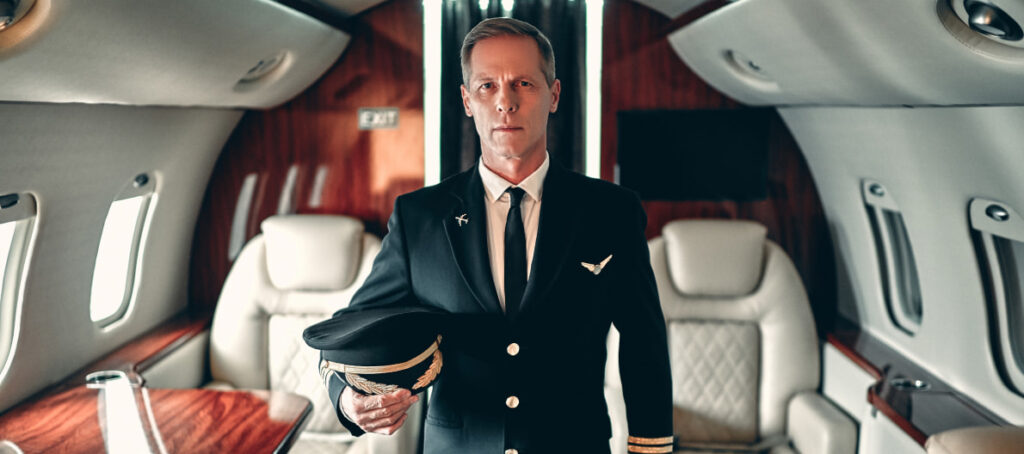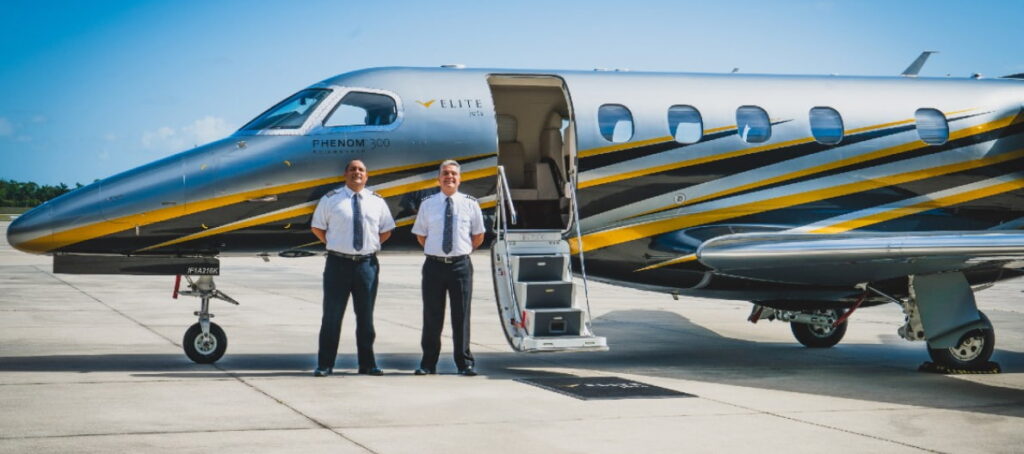In aviation, there are a lot of types of crew members and ranks. Each position has its own set of responsibilities and requirements for advancement. This article will explore the hierarchy of crewmembers in aviation, from the lowly cabin crew to the mighty captain. So, let’s take a look at how to climb the ranks in aviation and how it works.
Read on to find out why the mass media makes us think incorrectly about the pilots and why the captain is not always the most powerful person on the ship.

A Captain vs a Co-Pilot
The captain is the principal of the plane, and the co-pilot is the second in command. The first one is in charge of the lives of people on the ship and the safe conditions there. While the person you call a pilot assists the captain and takes control in urgent situations.
Ranks for pilot
Before getting to the ranks, it’s vital to pull the threads and reveal the common mass media mistakes. It is often reported in the news that the commander saved people on the ship while the pilot is just a person that helps the mighty one and does nothing but help. That’s not true. According to the airlines’ rules, a co-pilot, aka pilot, has the same plane controlling skills and has the same spectrum of tasks as the principal.
They also control the plane equally, but they only do it in turns. The only thing that differs between a captain and a co-pilot is that the first one has more responsibility than the second one.
As for the rank system, there are:
- Captain.
- Type rating captain.
- Senior first officer.
- First officer.
- Second officer.
Captain
Captains are the most experienced pilots on board and receive extensive training to achieve this position. In addition to piloting the plane, the master must supervise other pilots and ensure that all safety procedures are followed.
During a dangerous situation, the captain is in charge of making decisions that could save lives. For this reason, captains must be able to remain calm under pressure and have a thorough understanding of board systems. When everything goes according to plan, a captain’s job is relatively relaxed. But when things go wrong, it is up to the captain to get everyone safely back on the ground.
Type Rating Captain
A type rating captain is a captain who has been trained to fly a specific type of aircraft. This training is usually done by the airline that hires the captain. Type rating captain training can be expensive, but it is worth it for the airlines because it ensures that their captains are fully qualified to fly their planes. In addition, type rating captain training allows the captain to get to know the aircraft better and become more familiar with its systems. This familiarity can be extremely beneficial in dangerous circumstances.
Senior First Officer
SFO is the second commander of the aircraft. He is responsible for supporting the aircraft captain and may also be called the co-pilot.
If the captain becomes incapacitated, the SFO would assume command of the plane. The SFO is also responsible for carrying out any necessary emergency procedures. Senior first officers are typically experienced pilots who have undergone extensive training on their aircraft type. They play a vital role in ensuring the safety of every flight.
First Officer
As the first officer of the aircraft, it is your responsibility to assist the captain of a plane in all aspects of the flight. This includes support for pre-flight checks, in-flight monitoring of the aircraft and landing and take-off assistance.
In addition, you will also be responsible for contact with air traffic control and handling any other aircraft systems. While the job can be challenging at times, it is also very rewarding. Seeing the world from above is an amazing experience, and being able to help others travel safely is a great feeling.
Second Officer
As a second officer on an aircraft, you play a vital role in ensuring the safety of the flight. You play an important role in ensuring flight safety. You are responsible for watching the aircraft systems and notifying the master of any changes or potential failures. It also controls aircraft during takeoff and landing and helps people in flight.
In order to be successful in this role, you need to be able to work well under pressure and have excellent coordination and communication skills. This occupation allows you to do all the above in case the principal is sleeping, and you are working with a cruise.

How to Become a Captain?
In order to become a captain, you must first have a commercial pilot’s license. Once you have it, you will need to gain experience flying various types of aircraft. Most airlines require captain applicants to have at least 3,000 hours of flight time, although some may require more. In addition to flight time, captain applicants must also pass a series of written and practical exams. These exams test your knowledge of aircraft systems and procedures. Once you have met all the requirements, you will be able to apply for a captain position with an airline. But there is another way to be a captain.
Direct Entry Captains
They are those who are hired by an airline with no prior experience. While this is possible, it is very rare. Most airlines prefer to hire pilots for captain positions who have practice flying the same or similar aircraft type. This allows him to hit the ground running and provide a higher level of service to passengers.
Advantages of direct entry captains:
- No need for captain training.
- Can start working immediately.
The disadvantages:
- Less experience.
- Possibility to get into the toxic atmosphere because the other pilot might be jealous of your position since you got it with no experience while he didn’t.

The Command Course
The command course is a series of training flights designed to tecommanders the skills they need to lead a team of pilots. The course begins with basic formation flying and then progresses to more complex maneuvers, such as in-flight refueling and long-range navigation. Throughout the course, commanders learn how to make quick decisions under pressure and how to keep their crew safe in challenging situations. The command course is an essential part of becoming an aircraft commander pilot, and it helps to ensure that pilots have the skills they need to lead their crews through any situation.
But it’s not necessary to be a captain or a pilot to get to any point on Earth. You can take the opportunity to rent the private aircraft from Charter Jets, Inc. This company will help you to get to any place all over the globe at the lowest prices. You can be sure that you will save your money and the flight is secure.
FAQ
Why should one be a captain?
There are many reasons why someone might want to become a captain. For one, it is an excellent way to see the world. As a captain, you will have the opportunity to travel to different countries and experience different cultures. You will also get to meet new people and build relationships with them.
How much can the captain earn?
The salary of an aircraft captain depends on a number of factors. However, captains of large aircraft can earn salaries in excess of $100,000 per year. In addition to their salary, aircraft captains also receive several other benefits, including free or discounted travel for themselves and their families.
How much can a co-pilot earn?
Aircraft co-pilots generally earn less than their captain counterparts. However, they still receive a good salary, with the median wage for co-pilots being just over $100,000 per year.
Is it hard to be a captain?
As the captain, you are responsible for the lives of everyone on board, which can be a lot of pressure. You need to be able to make quick decisions in an emergency and know when to delegate tasks to your crew. You also need to have a good understanding of aircraft systems and be able to handle the stress of long hours in the air.
